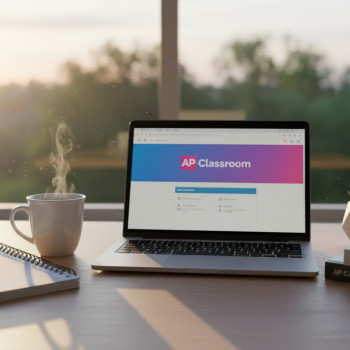Why Quiet Hours Matter for AP Students
Boarding school life can feel like a juggling act: classes, clubs, meals, dorm life, and — if you’re taking AP courses — a mountain of preparation that doesn’t respect free periods. Quiet hours are the school’s way of carving out intentional time for focused work, but not all quiet hours are created equal. A thoughtfully designed Quiet Hours AP Plan can turn fragmented study into consistent progress, reduce last-minute cramming, and help you balance sleep, social life, and academic ambition.

Principles Behind a Smart Quiet Hours AP Plan
Before we get into schedules and tactics, it helps to anchor yourself with a few guiding principles. Think of these as the rules of the road that keep your plan realistic and sustainable.
- Consistency over intensity: Regular, shorter study blocks beat sporadic all-nighters every time.
- Quality beats quantity: Active study (practice questions, short retrieval practice, problem sets) is far more effective than passive reading.
- Balance is non-negotiable: Sleep, movement, and breaks are part of the study plan, not distractions from it.
- Customizable structure: Your AP subjects, natural rhythm (are you a morning person?), and boarding school rules should shape the plan — not the other way around.
Typical Boarding School Day — Where Quiet Hours Fit In
Boarding schools differ, but many share a similar rhythm: morning prep, classes, meals, activities, evening study time, and lights-out rules. The key is to identify the windows you can reliably claim for AP work and then make them high-value.
Common Windows for Focused Study
- Early morning (6:00–7:30 AM): Short, calm sessions for review or memorization before the day starts.
- Mid-afternoon gap (3:30–5:00 PM): Ideal for problem-based work while your brain is still alert after classes.
- Evening quiet hours (7:30–10:30 PM): The traditional “study hall” window in many boarding schools.
- Late-night micro-sessions (10:30–11:15 PM): Best for low-effort tasks like flashcard review — but only if you’re not sacrificing sleep.
Designing Your Quiet Hours AP Plan: A Step-by-Step Guide
Here’s a practical template you can adapt in minutes. It blends focused study blocks, active methods, and rest so you arrive at exam day more confident than exhausted.
Step 1 — Audit Your Week
Write down your weekly non-negotiables: classes, sports, club meetings, chores, and any fixed dorm rules. Circle the blocks where you reliably have 30–90 minutes of uninterrupted time. Those are your scaffolding blocks for AP study.
Step 2 — Prioritize by Deadline and Difficulty
Make a short list of your AP courses and categorize them:
- High Priority: Exams this year, concepts you struggle with, or classes with heavy homework.
- Medium Priority: Courses you understand reasonably well but must maintain.
- Low Priority: Courses with later exams or lighter expectations.
Use this list to decide which subject occupies the prime quiet-hour slots each day.
Step 3 — Build Repeating Weekly Blocks
Consistency is useful: make a weekly Quiet Hours AP calendar with recurring themes. Example: Monday and Wednesday for AP Calculus problem sets; Tuesday and Thursday for AP US History essay practice; Friday for review and practice tests.
Sample Quiet Hours Schedules
Below are adaptable schedules for different student rhythms. Pick one as a starting point and tweak.
Option A — Early Bird (Best if you’re sharper in the morning)
- 6:15–7:00 AM: Quick active recall (flashcards or formula review)
- Between classes: short practice problems if you have a gap
- 7:30–9:00 PM: Light review, homework consolidation
- 10:00–10:30 PM: Wind-down flashcard review or reading
Option B — Traditional Evening Focus
- 3:45–5:00 PM: Deep work session (tackle hard problem sets or mock free-response)
- 7:30–9:30 PM: Assigned homework and targeted review
- 9:30–10:00 PM: Short active recall slot
Option C — Split Sessions (For busy athletes or triple-threats)
- 6:00–6:45 AM: Concept review / quick reading
- 4:00–5:00 PM: Focused practice
- 8:00–9:00 PM: Homework and consolidation
Quick Table — Weekly Allocation Example
| Day | Primary Focus (90 min) | Secondary Focus (45–60 min) | Micro-Review (15–30 min) |
|---|---|---|---|
| Monday | AP Calculus — Problem Sets | AP Chemistry — Lab Data Review | Flashcards (Calculus) |
| Tuesday | AP English — Essay Writing | AP Biology — Diagram Practice | Vocabulary Review |
| Wednesday | AP Physics — Free Response | AP Spanish — Conversation Prep | Grammar Drill |
| Thursday | AP US History — Document Practice | AP Calculus — Review | Timeline Recall |
| Friday | Practice Test or Sectional Review | Catch-Up / Office Hours | Low-stakes Review (Flashcards) |
| Saturday | Extended Practice Test (AM) | Review Mistakes (PM) | Planning for Next Week |
| Sunday | Rest / Light Review | Organize Notes and Materials | Sleep In! |
Active Study Techniques for Quiet Hours
How you use a quiet hour matters more than how many you have. Swap passive re-reading for these high-impact activities:
- Practice Problems First: Attempt without notes, then check and correct errors.
- Distributed Retrieval: Use spaced flashcards for definitions, formulas, and key dates.
- Targeted Weakness Drills: Keep a “mistake log” and spend part of each session correcting past errors.
- Timed Sections: Simulate test conditions for part of the quiet hour to build stamina.
- Teach It: Explain a concept aloud to yourself or a roommate — if you can teach it, you know it.
Managing Dorm Dynamics During Quiet Hours
Boarding school quiet hours can be disrupted by roommate schedules, cleaning routines, or late-night socializing. Here are practical, respectful strategies to protect your focus without creating friction.
Set a Dorm Agreement
A short, written dorm compact can work wonders. Agree on noise levels, shared lamp usage, and how to signal when someone needs absolute quiet for an exam prep night.
Use Visual Signals
Small signals — a closed door, a desk lamp with a colored sticky note, or headphones with a “Do Not Disturb” sign — help establish boundaries without awkward conversations.
Find Backup Spaces
Identify two alternate study spots: the library carrel and a classroom that’s unused after activities. Rotate to these spots if the dorm feels noisy.
Sleep, Nutrition, and Movement — Non-Negotiables
Quiet hours are only useful if your brain and body can engage. Don’t short-change these essentials.
- Sleep: Aim for 7–9 hours. The most effective study blocks are not the longest; they’re the ones taken when you’re rested.
- Food: Balanced snacks with protein and complex carbs (nuts, yogurt, fruit) sustain attention better than sugary snacks.
- Movement: Short movement breaks (5–10 minutes) between 45–60 minute blocks restore focus and reduce stress.
Sample Quiet Hour Session — A 60-Minute Template
Use this mini-routine to maximize a single quiet hour. It’s short, science-backed, and easy to repeat.
- 0–5 minutes: Set a clear, specific goal (e.g., complete 6 AP Calculus practice problems focused on integration by parts).
- 5–40 minutes: Deep work — attempt problems under timed conditions or write a timed essay outline.
- 40–50 minutes: Check work, annotate errors, add one correction note to your mistake log.
- 50–60 minutes: Low-effort consolidation — flashcards, quick verbal summary, or a short concept map.
Using Practice Tests Smartly During Quiet Hours
Practice tests are the highest-value activity you can do, but only if you review them correctly. Schedule sectional practice in quiet hours and set aside separate review sessions to drill mistakes.
How to Review a Practice Test
- Mark problems you guessed on or left blank.
- Annotate exactly why each error happened (concept gap, careless mistake, timing issue).
- Create a short micro-plan to fix each error type (e.g., 15 minutes of targeted practice next session).
How Sparkl’s Personalized Tutoring Can Fit Your Quiet Hours Plan
Personalized support can turn efficient study into accelerated progress. Sparkl’s personalized tutoring model complements a boarding school Quiet Hours AP Plan in natural ways:
- One-on-one guidance helps you target your most persistent gaps during quiet hours instead of guessing at what to practice.
- Tailored study plans map your quiet-hour windows to weekly goals so every session has a clear purpose.
- Expert tutors provide model solutions and feedback you can review during quiet hours, saving time and increasing effectiveness.
- AI-driven insights can highlight patterns in your practice-test mistakes, helping you prioritize which quiet-hour sessions yield the biggest gains.
When you combine disciplined quiet hours with targeted, personalized feedback, the result is steady, measurable improvement without the burnout.

Common Challenges and How to Overcome Them
Any plan meets resistance. Here are common obstacles boarding school students encounter and straightforward fixes you can implement during quiet hours.
Challenge: Dormmates Break the Vibe
Fix: Rotate study locations, set a dorm compact, and negotiate a couple of enforced quiet nights each week when everyone agrees to keep noise to a minimum.
Challenge: I Don’t Know What to Study
Fix: Use the 80/20 rule — spend 80% of your effort on the 20% of topics most likely to appear on the exam or the concepts you consistently miss on practice tests. Keep a running “error bank” to prioritize.
Challenge: I Procrastinate During Quiet Hours
Fix: Start with a 10-minute extremely focused micro-session (Pomodoro technique) to build momentum. Track small wins and gradually increase session length.
Tracking Progress — Simple Metrics That Work
Progress doesn’t have to be mysterious. Use a few clear metrics to measure how your Quiet Hours AP Plan is paying off:
- Practice test scores by topic (track improvement week-to-week).
- Number of timed questions completed per week.
- Ratio of correct first-attempts to corrected attempts (shows fewer conceptual gaps).
- Sleep consistency and stress levels (use a simple weekly check-in).
Example: How One Week of Quiet Hours Can Move the Needle
Here’s a real-world example to illustrate the compounding effect of a well-designed plan. Imagine you’re taking AP Biology and AP Calculus AB.
- Week 1: You schedule five 60-minute quiet-hour sessions focused on Calculus problem types you miss most. You also do one 90-minute focused AP Biology practice passage review. After the week, you lower careless errors by 15% on practice sets and improve timing by finishing sections in allotted time.
- Week 2: Using the mistake log, you do targeted drills for the two most frequent error types and add one Sparkl 1-on-1 tutor session to clarify conceptual hurdles. Mistake frequency drops further and confidence increases on simulation quizzes.
Small, intentional improvements across successive quiet-hour weeks add up to big exam-day performance gains.
Final Checklist — Set Up Your Quiet Hours Tonight
Use this quick checklist to implement your Quiet Hours AP Plan immediately:
- Audit your weekly schedule and identify consistent 30–90 minute blocks.
- Prioritize AP subjects by exam date and difficulty.
- Create a repeating weekly theme for each quiet-hour block.
- Choose one active study method for each block and stick to it.
- Set up a dorm compact and identify backup study spaces.
- Track progress with simple weekly metrics and adjust the plan as needed.
Parting Advice — Make Quiet Hours a Practice, Not a Punishment
Quiet hours are a gift — the chance to invest in your future in calm, intentional ways. Treat them like a ritual: prepare your materials before the block starts, set a clear goal, and close the session with a short note about what went well and what to change next time. If you occasionally need extra structure, tutoring support like Sparkl’s personalized approach can slot seamlessly into your schedule and keep you moving in the right direction without turning study into stress.
Take heart: AP success isn’t born out of marathon study sessions alone but out of repeated, focused practice delivered over time. Use your boarding school quiet hours wisely, protect your sleep, and keep the plan flexible enough to survive real life. Do that, and the scores will follow — steadily, confidently, and without burning out.
Ready to Try It?
Tonight, pick one quiet-hour block, set a single, measurable goal, and commit to that small win. Consistency compounds; a quiet hour done well is a promise to your future self.




















No Comments
Leave a comment Cancel